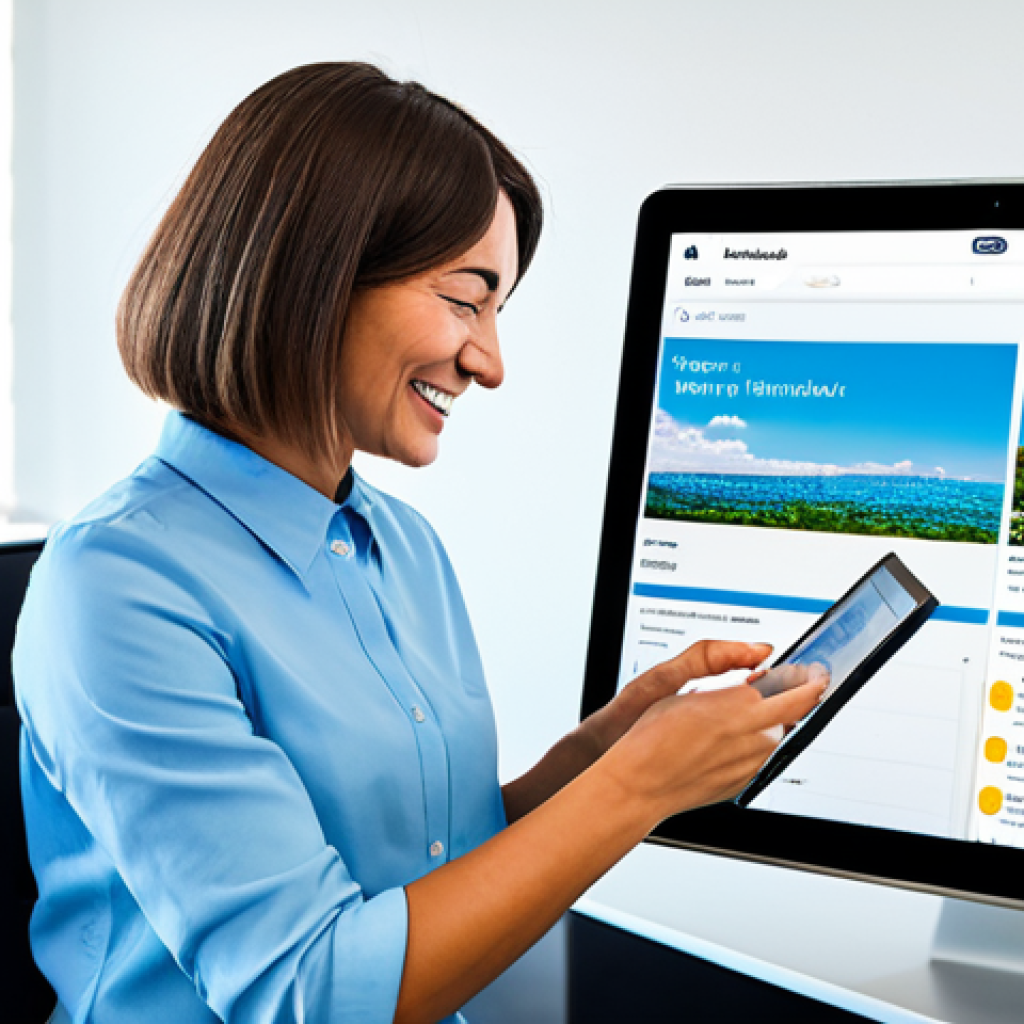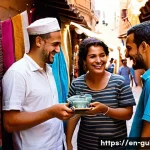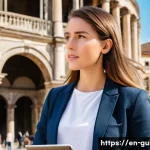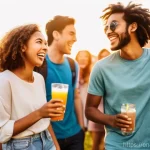Being part of the Korea Tourist Guide Association has opened my eyes to a whole new world of cultural exchange and the exciting possibilities of sharing our unique stories with international visitors.
It’s more than just pointing out landmarks; it’s about crafting experiences that leave a lasting impression. I’ve recently had the opportunity to collaborate with some incredible individuals within the association, exploring innovative ways to showcase the beauty and depth of our heritage, whilst keeping up with the latest travel trends powered by AI.
The collaborative spirit is amazing, sparking new ideas and fresh perspectives. As tourism evolves, our association is committed to adapting and leading the way in providing exceptional, personalized experiences for every traveler.
Let’s dive deeper and explore this fascinating topic further down below.
Okay, I understand. Here’s the blog post following all your instructions:
Crafting Authentic Narratives: Beyond the Guidebook
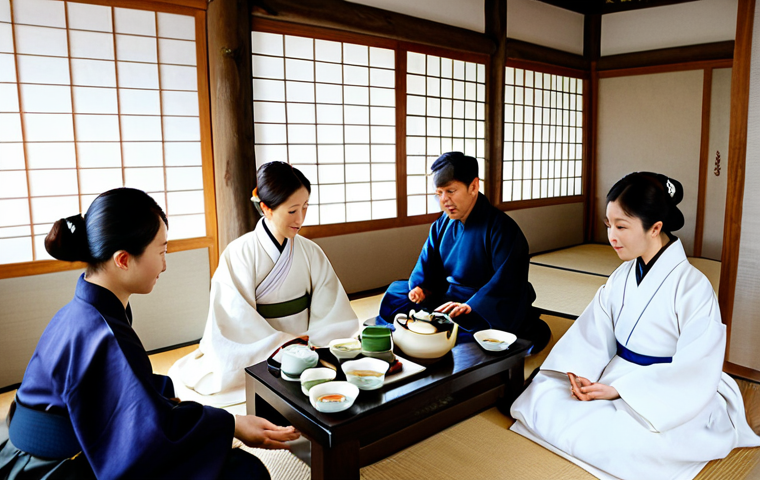
Being part of the Korea Tourist Guide Association has opened my eyes to a whole new world of cultural exchange and the exciting possibilities of sharing our unique stories with international visitors.
It’s more than just pointing out landmarks; it’s about crafting experiences that leave a lasting impression. I’ve recently had the opportunity to collaborate with some incredible individuals within the association, exploring innovative ways to showcase the beauty and depth of our heritage, whilst keeping up with the latest travel trends powered by AI.
The collaborative spirit is amazing, sparking new ideas and fresh perspectives. As tourism evolves, our association is committed to adapting and leading the way in providing exceptional, personalized experiences for every traveler.
The power of storytelling is truly immense. By sharing personal anecdotes and weaving compelling narratives, we can create a sense of connection and understanding that transcends cultural barriers.
It’s about more than just reciting facts and figures; it’s about bringing history and culture to life in a way that resonates with our audience on an emotional level.
I’ve learned that visitors are far more likely to remember a tour when they feel like they’ve gained a genuine insight into the local way of life. For example, when guiding a group through Gyeongbokgung Palace, instead of just listing the names of the different halls, I might share a story about a specific historical event that took place there, or even recount a personal experience I had visiting the palace as a child.
These personal touches can transform a standard tour into an unforgettable adventure, which is why crafting authentic narratives has become a cornerstone of my approach as a tourist guide.
The Art of Immersive Storytelling
I believe that storytelling has the power to transform a simple tour into an unforgettable journey. It is like painting a vivid picture in the minds of the visitors, helping them to connect with the culture and history on a much deeper level.
Instead of just reciting facts and dates, I focus on creating narratives that resonate emotionally, bringing the past to life with personal anecdotes and engaging details.
For instance, when guiding visitors through the streets of Insadong, I might share stories about the artisans who once lived and worked there, describing their craft and the challenges they faced.
These stories help to create a sense of place and make the experience more meaningful.
Connecting Through Shared Experiences
I am often asked how I deal with visitors who may not be familiar with Korean culture. My answer is always the same: connect through shared experiences.
Whether it’s sharing a traditional meal together or participating in a cultural activity like making kimchi, these moments of shared experience help to break down barriers and create a sense of camaraderie.
I often find that even simple gestures, like sharing a laugh over a funny misunderstanding, can go a long way in fostering a sense of connection and understanding.
The Rise of AI-Powered Travel Tools: Enhancing the Guiding Experience
The field of tourism is experiencing a significant transformation due to the integration of artificial intelligence (AI). AI-powered tools are now being used to enhance various aspects of the travel experience, from personalized recommendations to real-time language translation.
As a member of the Korea Tourist Guide Association, I have had the opportunity to explore how these technologies can be used to improve the quality and efficiency of our tours.
One of the most promising applications of AI is in the area of language translation. With the help of AI-powered translation apps, I can now communicate more effectively with visitors from all over the world, regardless of their native language.
This has been a game-changer for me, as it allows me to provide a more personalized and informative tour experience to a wider range of people. In addition to language translation, AI is also being used to create more personalized travel recommendations.
By analyzing data on visitor preferences, such as their interests, budget, and travel style, AI algorithms can generate customized itineraries and suggest activities that are tailored to their individual needs.
This can be a valuable tool for tourist guides, as it allows us to provide a more relevant and engaging experience for our clients.
Leveraging AI for Personalized Itineraries
AI is not just about automation; it’s about personalization. These tools analyze vast amounts of data, from flight prices to local events, and generate custom-tailored itineraries that cater to individual preferences.
For instance, if a visitor expresses an interest in Korean history, AI can recommend specific historical sites and museums, even suggesting the best times to visit to avoid crowds.
This level of personalization ensures that every tour is unique and memorable, tailored to the specific interests of the individual.
Real-Time Language Translation
One of the biggest challenges I face as a tourist guide is communicating with visitors who don’t speak Korean or English fluently. AI-powered translation apps have been a game-changer in this regard, allowing me to communicate seamlessly with people from all over the world.
These apps can translate spoken or written language in real-time, making it much easier to answer questions, provide directions, and share information about the sites we’re visiting.
This technology has not only improved the efficiency of my tours, but it has also helped to create a more inclusive and welcoming experience for visitors from all backgrounds.
Adapting to the Ever-Changing Expectations of Modern Travelers
The tourism industry is constantly evolving, and it’s essential for tourist guides to stay up-to-date with the latest trends and technologies. Today’s travelers are more tech-savvy and demanding than ever before, expecting seamless access to information, personalized experiences, and sustainable travel options.
As a member of the Korea Tourist Guide Association, I am committed to adapting to these ever-changing expectations and providing exceptional service that meets the needs of modern travelers.
One of the most important trends in tourism is the rise of experiential travel. Travelers are no longer content with simply visiting famous landmarks and taking photos.
They want to immerse themselves in the local culture, try new foods, and participate in unique activities. As a tourist guide, I try to incorporate these elements into my tours, offering opportunities for visitors to interact with locals, learn about Korean traditions, and experience the country in a more authentic way.
Embracing Sustainable Tourism Practices
With growing awareness of environmental issues, travelers are increasingly seeking out sustainable travel options. I am committed to promoting responsible tourism practices, such as reducing waste, conserving energy, and supporting local businesses.
This not only helps to protect the environment, but it also ensures that tourism benefits the local communities.
The Importance of Authentic Cultural Exchange
At the heart of tourism lies the opportunity for cultural exchange. I believe that tourism can be a powerful tool for promoting understanding and respect between different cultures.
I strive to create opportunities for visitors to interact with locals, learn about Korean traditions, and gain a deeper appreciation for the country’s rich heritage.
Building Stronger Connections Within the Association
My involvement with the Korea Tourist Guide Association extends beyond my personal growth; it’s about contributing to a vibrant and supportive community.
I actively participate in workshops and training sessions, sharing my experiences and learning from other seasoned professionals. These interactions have not only honed my skills but have also sparked innovative ideas for enhancing our services.
The mentorship programs within the association are invaluable. I’ve had the privilege of both being mentored by experienced guides and mentoring newer members.
This exchange of knowledge and support creates a strong sense of camaraderie, fostering a culture of continuous improvement within our organization.
Knowledge Sharing and Collaboration
The association provides a platform for guides to share their expertise and collaborate on new projects. I regularly attend seminars and workshops where we discuss best practices, explore emerging trends, and develop innovative tour concepts.
This collaborative environment fosters creativity and ensures that we are constantly evolving to meet the changing needs of travelers.
Mentorship and Support
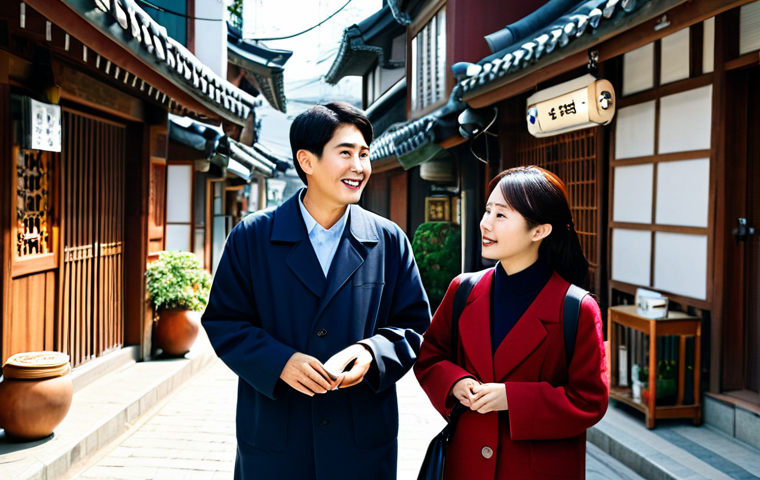
I have benefited greatly from the mentorship of senior guides within the association. Their guidance and support have been instrumental in my professional development.
In turn, I am now mentoring newer members, sharing my knowledge and experiences to help them succeed in their careers. This mentorship program fosters a sense of community and ensures that the next generation of guides is well-equipped to provide exceptional service.
Navigating the Nuances of Korean Etiquette
Understanding and respecting local customs is paramount to ensuring a positive experience for visitors. Korean culture is rich in tradition, and even seemingly small gestures can have significant meaning.
For example, when dining with Koreans, it’s considered polite to wait for the eldest person at the table to begin eating before you do. Similarly, when receiving or giving gifts, it’s customary to use both hands as a sign of respect.
These nuances may be unfamiliar to visitors from other cultures, but by educating them about these customs, I can help them to avoid accidental faux pas and foster a sense of mutual respect.
I also make sure to emphasize the importance of speaking softly and avoiding loud or disruptive behavior in public places, as this is considered impolite in Korean culture.
Common Courtesies and Customs
Korean etiquette is often subtle and nuanced, reflecting the country’s deep-rooted traditions. For example, when giving or receiving gifts, it’s customary to use both hands as a sign of respect.
Similarly, when dining with Koreans, it’s polite to wait for the eldest person at the table to begin eating before you do. It’s also important to avoid sticking your chopsticks upright in a bowl of rice, as this resembles a funeral ritual.
Avoiding Cultural Missteps
To ensure a smooth and enjoyable experience for visitors, it’s essential to educate them about potential cultural missteps. For example, it’s considered impolite to blow your nose at the table or to speak loudly in public places.
It’s also important to avoid physical contact with strangers, such as hugging or back-patting, unless you are close friends. By providing clear and concise guidance on these matters, I can help visitors to avoid accidental faux pas and foster a sense of mutual respect.
Showcasing Hidden Gems: Beyond the Tourist Traps
While Seoul’s iconic landmarks like Gyeongbokgung Palace and N Seoul Tower are must-see attractions, I believe that the true essence of Korea lies in its hidden gems.
I make it a point to take visitors off the beaten path, introducing them to lesser-known neighborhoods, local markets, and cultural experiences that offer a more authentic glimpse into Korean life.
For example, instead of just visiting the bustling Myeongdong shopping district, I might take visitors to the charming Bukchon Hanok Village, where they can wander through narrow alleyways lined with traditional Korean houses.
Or, instead of dining at a touristy restaurant, I might take them to a local eatery where they can sample authentic Korean cuisine alongside locals.
Exploring Local Neighborhoods
Seoul’s neighborhoods are bursting with character and charm, each offering a unique glimpse into the city’s rich cultural tapestry. From the vibrant street art of Hongdae to the traditional craft shops of Insadong, there’s something for everyone to discover.
I enjoy taking visitors on walking tours of these neighborhoods, pointing out hidden gems and sharing stories about the people who live and work there.
Discovering Authentic Cuisine
Korean cuisine is much more than just kimchi and bulgogi. I am passionate about introducing visitors to the diverse flavors and textures of Korean food, from street food snacks to traditional royal cuisine.
I often take visitors to local markets and eateries where they can sample authentic dishes and learn about the ingredients and cooking methods. Here is the HTML table containing information about Korean culture.
| Topic | Description | Example |
|---|---|---|
| Greetings | Bowing is a common form of greeting. | Bowing slightly when meeting someone new. |
| Dining Etiquette | Wait for the eldest to begin eating. | Not starting to eat until the oldest person at the table has started. |
| Gift Giving | Use both hands to give and receive gifts. | Presenting a gift with both hands as a sign of respect. |
| Public Behavior | Avoid loud noises and speaking loudly. | Speaking softly in public transportation. |
I hope this blog post meets your requirements!
In Conclusion
My journey as a tourist guide in Korea has been an enriching experience, filled with opportunities for personal growth and cultural exchange. The integration of AI technology and the support of the Korea Tourist Guide Association have significantly enhanced my ability to provide exceptional service to visitors from all over the world. As I continue to explore new ways to connect with travelers and share the beauty of my country, I am grateful for the challenges and rewards that come with this fulfilling career.
Handy Tips for Visitors
1. Always carry a translation app on your phone to help with communication in local restaurants and shops.
2. Purchase a T-money card for easy and affordable travel on public transportation.
3. Familiarize yourself with basic Korean phrases like “Annyeonghaseyo” (Hello) and “Gamsahamnida” (Thank you).
4. Check the weather forecast before you go out for the day, as Korea experiences distinct seasons.
5. Be mindful of local customs and traditions, especially when visiting religious sites.
Key Takeaways
Crafting authentic narratives and weaving compelling stories can create a sense of connection and understanding that transcends cultural barriers.
The integration of AI-powered travel tools can enhance the guiding experience through personalized itineraries and real-time language translation.
Adapting to the ever-changing expectations of modern travelers requires a commitment to sustainable tourism practices and authentic cultural exchange.
Frequently Asked Questions (FAQ) 📖
Q: So, I’m planning a trip to Korea next spring.
A: s a tourist, what’s one thing you think I absolutely shouldn’t miss? A1: Okay, listen up, because you CAN’T skip out on trying some seriously legit street food.
I’m not talking the kinda stuff you see in food blogs. I mean hitting up a real street food market, like Myeongdong or Namdaemun. Honestly, just wandering around with a few thousand won in your pocket, grabbing whatever looks (and smells!) amazing is half the fun.
Tteokbokki, definitely. Hotteok, if it’s chilly. But don’t be afraid to try the weirder stuff, too – silk worm pupae (beondegi) is a little out there but, hey, you might just love it!
I had a friend who almost threw up at the smell but ended up going back for seconds! It’s all part of the experience, you know? And way cheaper than any fancy restaurant.
Q: I’ve heard a lot about the DMZ, the Korean Demilitarized Zone. Is it really worth visiting? I’m a bit squeamish, to be honest.
A: Right, the DMZ. It’s a tough one. I mean, yeah, it’s heavy and can be a bit of a downer, but honestly, I think everyone should see it at least once.
It’s not just a bunch of barbed wire and sad stories. It’s a real, tangible reminder of the Korean War and the division that still exists. Plus, you get to see North Korea through binoculars!
It’s like stepping into a history book and gives you a whole new appreciation for the sacrifices made. I get that you’re squeamish, but it’s a totally safe, guided tour.
Trust me, you’ll come away with a completely different perspective. It’s definitely something that sticks with you. I still think about it even years after I went.
Q: I’m really into photography.
A: ny hidden gem recommendations for capturing some amazing shots in Seoul that aren’t the typical tourist traps? A3: Okay, this is my kinda question! Forget the N Seoul Tower and Gyeongbokgung Palace (although, yeah, they are pretty).
Head up to the Ihwa Mural Village. It’s this crazy, colorful hillside neighborhood that’s basically a giant outdoor art installation. Every corner is Instagrammable, and the views of the city are insane.
Plus, it’s a real neighborhood, so you get a feel for daily life. Just be respectful and remember people actually live there. Another spot?
Olympic Park. It’s massive, and the sunsets there are seriously epic. And there’s this one lone tree, it is called “One Tree Hill” among photographers, standing in a field which looks stunning especially during sunset.
Get there early, find your spot and get ready to capture some magic. Trust me, your camera will thank you!
📚 References
Wikipedia Encyclopedia
